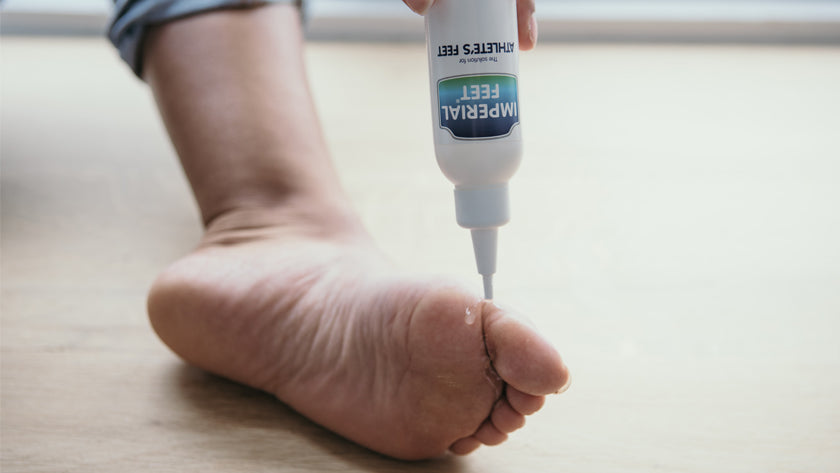
Athlete's foot part II: Q&A with professional nail technician, Wendy-Ann Pompey
"I have an athlete's foot. What should I do?." Pedicure specialist Wendy-Ann Pompey provided additional tips on this type of skin infection caused by fungus. Keep reading this blog post because it is helpful and explained by a professional.
In part I of the previous article we talked about athlete's foot, but we would like to clarify some other doubts we usually receive from our customers.
We often get confused with some lesions that occur on our feet, we think it is a blister or a rash, but actually, we do not know how to identify that it is an athlete's foot.
Don't worry, Wendy-Ann is here to clear everything up:
Where does an athlete's foot come from?
Wendy-Ann: Athlete's foot develops when the skin comes in contact with a fungus called a dermatophyte.
When does an athlete's foot get infected?
Wendy-Ann: Untreated athlete's foot can develop a bacterial infection which would require antibiotics, but the fungal infection will still need to be treated.
Where can an athlete's foot spread?
Wendy-Ann: Athlete's foot is highly contagious and can easily be spread through coming in contact with infected flakes of skin. You can also get athlete's foot in warm, moist, or watery environments like swimming pools, lockers, or changing rooms, especially those on the beaches.
Why is an athlete's foot only on one foot?
Wendy-Ann: A type of athlete's foot called moccasin causes dryness and peeling of the feet and because athlete's foot is spread mainly in warm moist conditions, it is possible to be contained in one area or one foot, however, if it is touch or picked, it can spread to the fingers and hands.
Which athlete's foot medicine is best?
Wendy-Ann: There are quite a few effective treatments on the market including oral and topical medications but I prefer products with natural ingredients like Imperial Feet’s Athletes Foot Solution.
Why athlete's foot won't go away?
Wendy-Ann: There are so many treatment options for athlete's foot, therefore I believe that it is possible to find a treatment that is ideal for each individual. So for me, I think the only reason athletes' foot won't go away is if it's not treated.
Will athlete's foot cream kill ringworm?
Wendy-Ann: Athlete's foot is ringworm of the foot, so any highly effective athlete's foot ointment, cream, or solution will treat it. However, for ringworms on other parts of your body, you will need treatment or ointment suitable for that area specifically, this is mainly to prevent damage to the skin.
Will an athlete's foot go away on its own?
Wendy-Ann: No it will not, if left untreated it will only worsen. Treating an athlete's foot in its early stage will greatly reduce the length of time it will take to go away.
As we have learned in this article, an athlete's foot can be healed but only if we are very cautious, both in noticing its existence, as well as in its timely treatment and prevention of its spread. Our team is always up to date on topics that can contribute to the health of your feet and your family.
We hope this information has been useful to you, and may you share it with someone who needs it. Part 1 of Q&A' s about athlete's foot is available here Thank you for being part of the Imperial Feet online community!







